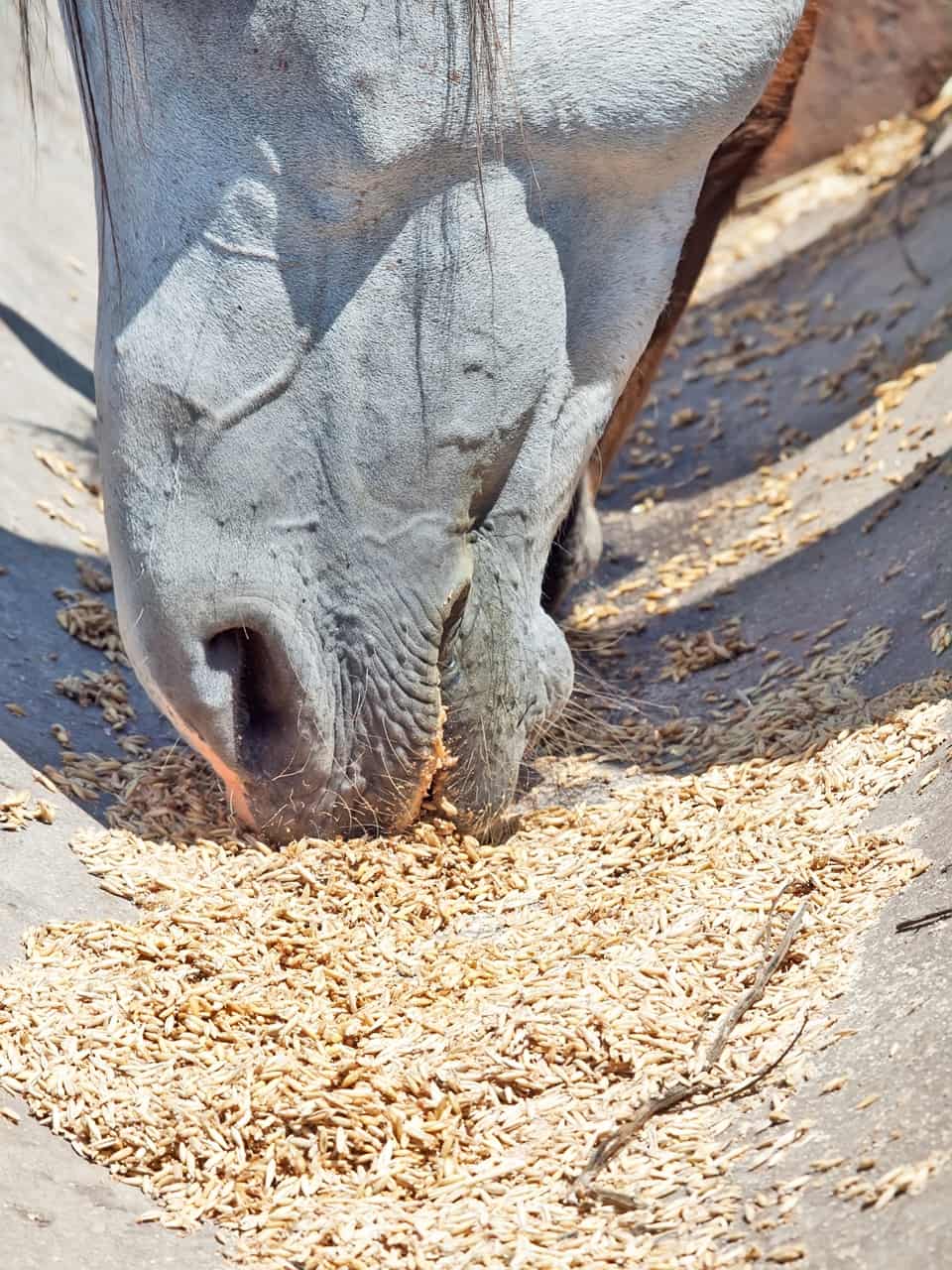Oats and OTTBs
- Posted by Clair Thunes, PhD

A. Fed as a concentrated source of calories, oats have been the go-to grain for horsemen for generations. They have a reputation for being a safer choice than other common grains, such as corn, barley, and wheat. This has to do with the fact that at about 45% starch, oats contain significantly less starch than the other grains, which have a starch content between 55-70%. Oat starch is also more digestible, due to its chemical structure. Both factors mean undigested starch has less risk of reaching the horse’s hindgut, where it would disrupt microbial fermentation. Should oats reach the hindgut, they provide more fiber than the other grains, potentially causing less damage to the hindgut environment.
This doesn’t mean, however, that you can feed horses unlimited amounts of oats. Large amounts of oats can still overwhelm the small intestine and its ability to digest and remove that starch, resulting in hindgut disruption. Keep meals containing oats small—less than 5 pounds per meal for an average-sized (1,100-pound) horse—and wait at least six hours between grain meals.
Another quality that makes oats favorable is their relatively high fat content for a grain, at around 6.5%. The next highest fat content in a common grain is corn, at around 4%. Oats also provide oat beta glucan, a dietary fiber that might help support gastrointestinal mucosa and stimulate the immune system
Create a free account with TheHorse.com to view this content.
TheHorse.com is home to thousands of free articles about horse health care. In order to access some of our exclusive free content, you must be signed into TheHorse.com.
Start your free account today!
Already have an account?
and continue reading.

Written by:
Clair Thunes, PhD
Related Articles
Stay on top of the most recent Horse Health news with
















One Response
What about oats for a growing 2-year old Quarter Horse?